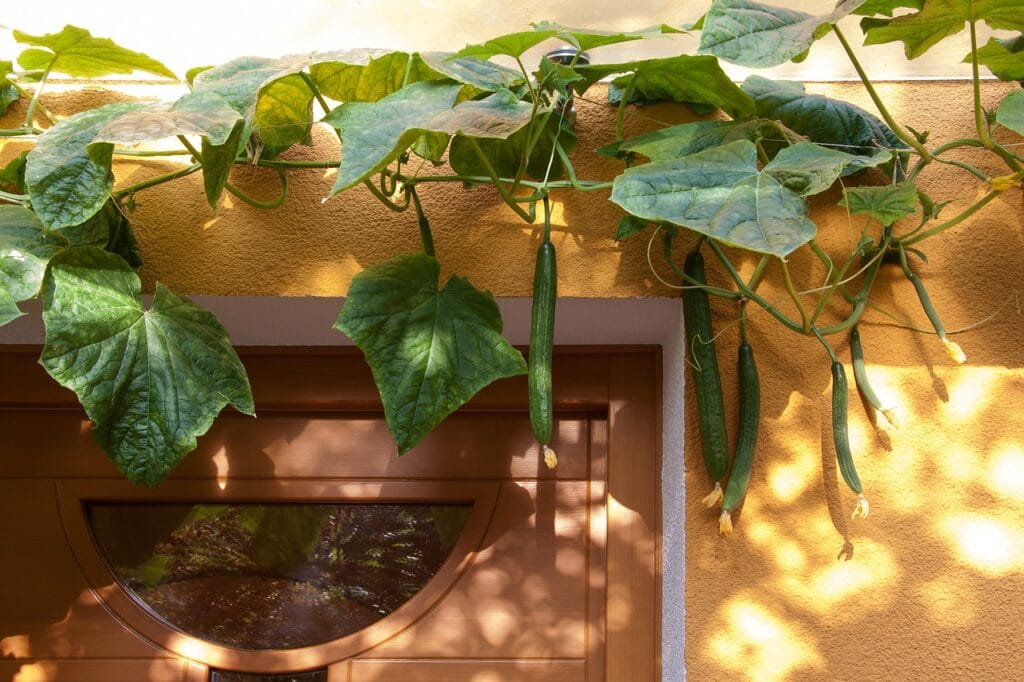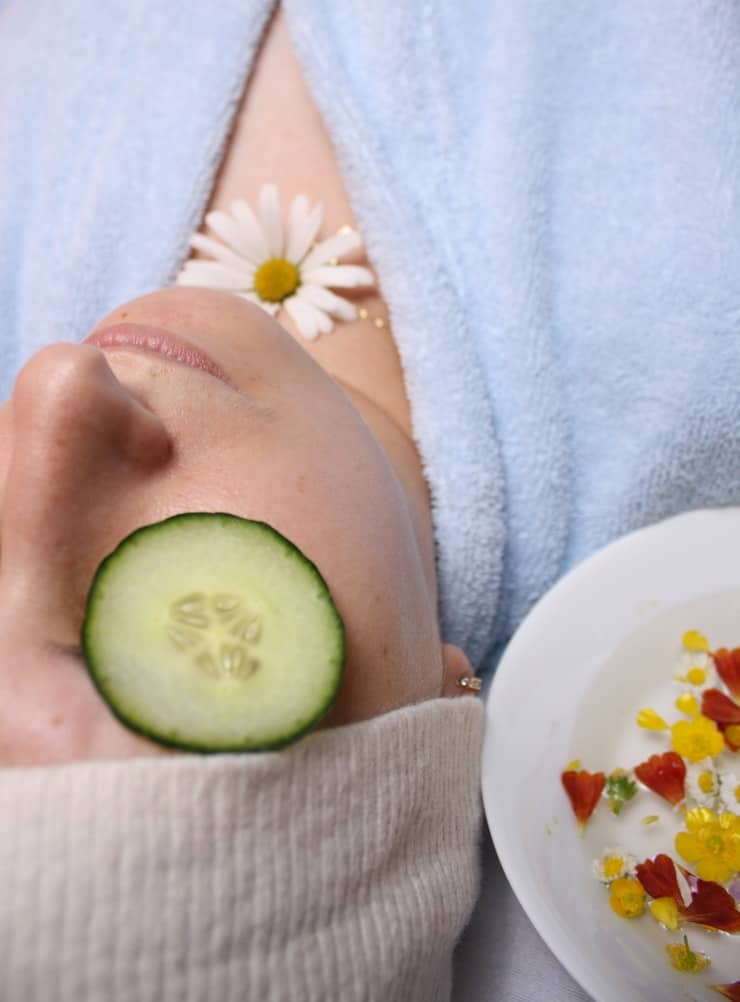Flower Glossary is reader-supported. When you buy through links on our site, we may earn an affiliate commission.
Usually called the Cucumber, Cucumis sativus is from the gourd family.
Originating from the East Indies, it is a yearly creeping vine that is often grown on trellises or any other kind of supportive frame. The Cucumis sativus is often found in home vegetable gardens.

Table of Contents
Growing Tips
Cucumis sativus is easy to grow and does best when grown in full sun with rich, moist, well-drained soil, preferring a slightly acidic pH of 6.0-6.5.
Seeds can be started inside your home or outside. For those of you who want to start seeds outside, it is recommended that you sow seeds in the spring after the danger of frost has passed, as frost can damage your young plants. You will need to plant the seeds 1” deep in rows 4 to 6 feet apart, or in hills about 4-6 feet apart. Select a warm area that stays consistently warm. Your plants will thrive during the hot summer days with warm nights.
Seeds started in containers indoors will need to be started 4-6 weeks before the last spring frost date. Sow the seeds ¾ to 1 inch deep. When relocating your young plants outside, the soil should be over 60 degrees. Trying to grow these plants in cooler soil can result in weak damaged plants.
At ideal temperature conditions, plants need 6 to 8 weeks from planting to the production of the first flowers with an additional 8 to10 weeks for the development of the first fruits. Cucumis sativus is ready to harvest when they reach the preferred size. However, plants that have turned yellow are overripe and will be tough.
Varieties
There are 3 main varieties of the Cumcumis sativus plant. Slicing, pickling, and burpless (seedless).
- Cucumbers that are grown just to eat fresh off the vine are called slicing cucumbers.
- Pickling cucumbers are also called picklers. They grow to about 3-4 inches long and 1 inch wide. Picklers are shorter, thicker, and have bumpy skin with white or black dots along their spines.
- Burpless cucumbers are sweeter with thinner skin than the other types. Burpless cucumbers can grow up to 2 feet long, are almost seedless and have delicate skin, easily digestible and nice taste. The lack of seeds and delicate skin is what makes them nearly burpless.

FAQs
Is cucumis sativus good for the skin?
- The extract of the Cucumis Sativus works as an antioxidant, anti-inflammatory, and skin conditioner when applied to the skin.
Is cucumber a fruit or vegetable?
- Cucumber is a fruit. It is usually considered a vegetable, but it grows from a flower and contains seeds so which makes it a fruit.
Why are cucumbers called cucumbers?
- The word cucumber derives from the Latin name Cucumis. Three hundred years ago, it was referred to as the cowcumber and used mainly for animal food. Further history of the name is unknown.
How much moisture does cucumis sativus need?
- Cucumbers need regular watering, at least one inch per week or more if grown in areas of high temperatures.
Sources
http://www.missouribotanicalgarden.org/PlantFinder/PlantFinderDetails.aspx?taxonid=279567
https://www.sciencedirect.com/topics/agricultural-and-biological-sciences/cucumis-sativus
https://plants.ces.ncsu.edu/plants/cucumis-sativus/
https://en.wikipedia.org/wiki/Cucumber
https://thedermreview.com/cucumis-sativus-cucumber-fruit-extract/
https://www.bonappetit.com/test-kitchen/ingredients/article/the-etymology-of-the-cucumber
https://www.almanac.com/plant/cucumbers